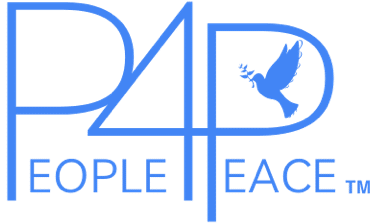In videos from 7 October, the body of a young woman is lying face down in the back of a pickup truck, stripped to her underwear, one leg bent at an unnatural angle. One of the men sitting next to her pulls her long hair as armed men around him shout praises to God.
Footage of the lifeless corpse of Shani Louk, a 22-year-old Israeli-German national, paraded around the streets of Gaza was some of the first to surface on 7 October, as the scale of the horror visited on sleeping families in kibbutzim neighbouring the strip and people partying at a nearby rave started to become clear.
In the more than three months since the unprecedented attack by the Palestinian group Hamas, the atrocities the militants committed have been well documented. Israel is still grappling with the trauma: entire families burned alive, torture and mutilation, children and elderly people ripped from the arms of their loved ones, seized as hostages.
Emergency responders risked their lives in the fighting on 7 October and several days afterwards to rescue the wounded and retrieve the dead. The chaos meant there were significant failings in preserving evidence of gender-based violence and what is coming to be seen as the systematic use of rape as a weapon of war by Hamas.
[The Guardian Report continues]
Zaka, Israel’s emergency response organisation, usually works in cooperation with police at the scenes of terrorist attacks so the authorities can gather evidence before Zaka removes the bodies. Many have said since the attack that they wished they had realised at the time that, although they were trying to treat the dead with respect, they were also contaminating crime scenes. Most Zaka workers are conservative ultra-Orthodox men: several have said that they “didn’t think of rape at all”.
The victims’ bodies were also released as quickly as possible from morgues to their families for the swift burial required by Jewish tradition, and crucial evidence buried with them.
Some posthumous forensic examination is still possible, but it is unlikely that the full extent of the gender-based violence committed on 7 October will ever be known.
The Guardian spoke to a Zaka volunteer, Simcha Greeneman, who said in one kibbutz he had come across a woman who was naked from the waist down, bent over a bed and shot in the back of the head. In another house, he discovered a dead woman with sharp objects in her vagina, including nails.
At the Shura military base in central Israel, where most of the dead were taken, the reservist Shari Mendes, who was tasked with washing the female bodies and preparing them for burial, told reporters: “We have seen women who have been raped, from the age of children through to the elderly.
“We were in such a state of shock … Many young women arrived in bloody shrouded rags with just their underwear, and the underwear was often very bloody. Our team commander saw several soldiers who were shot on the crotch, intimate parts, vagina or shot in the breasts,” she added.
The most detailed witness account of rape is from a young woman who attended the Supernova music festival, where more than 350 young people were killed. The witness, who was shot in the back, said she was hiding in vegetation just off route 232 when a large group of Hamas gunmen arrived, who between them raped and killed at least five women.
“They laid a woman down and I understood that he is raping her … They passed her on to another person,” she told police in a video reviewed by the Guardian. “And he cuts her breast, he throws it on the road and they are playing with it.”
One raped woman was “shredded to pieces” and another “stabbed repeatedly in the back while she was being raped”, the same witness said in an interview with the New York Times. The witness has provided police with photographs of her hiding place, and another survivor hiding in the same spot has testified that he saw at least one woman being raped.
One of the festival’s organisers, Rami Shmuel, who returned to the scene the day after the attack, has described finding the bodies of three young women “naked from the waist down, legs spread”.
“One had the face burnt,” he said. Another was “shot in the face” while the last had been “shot all over the lower part of her body”.
One woman who survived gang rape at the rave was being treated for severe mental and physical trauma, police said, and was in no condition to speak to investigators.
[The Guardian Report continues]
Linking suspects in custody to specific crimes was likely to be very difficult, Halperin-Kaddari said, although Israel intends to open criminal proceedings as soon as possible.
Individual victims will be able to file complaints amounting to crimes against humanity charges against Hamas at the international criminal court in The Hague, and the court is also expected to open a specific investigation into sexual violence on 7 October.
Halperin-Kaddari said: “An international investigation has more potential because the level of evidence is not as high as that in criminal proceedings, where you have to have a specific individual and specific victim and prove what happened beyond all reasonable doubt.
“To prosecute the overall scope of the atrocities and the degree of cruelty … We have enough for that already.”

